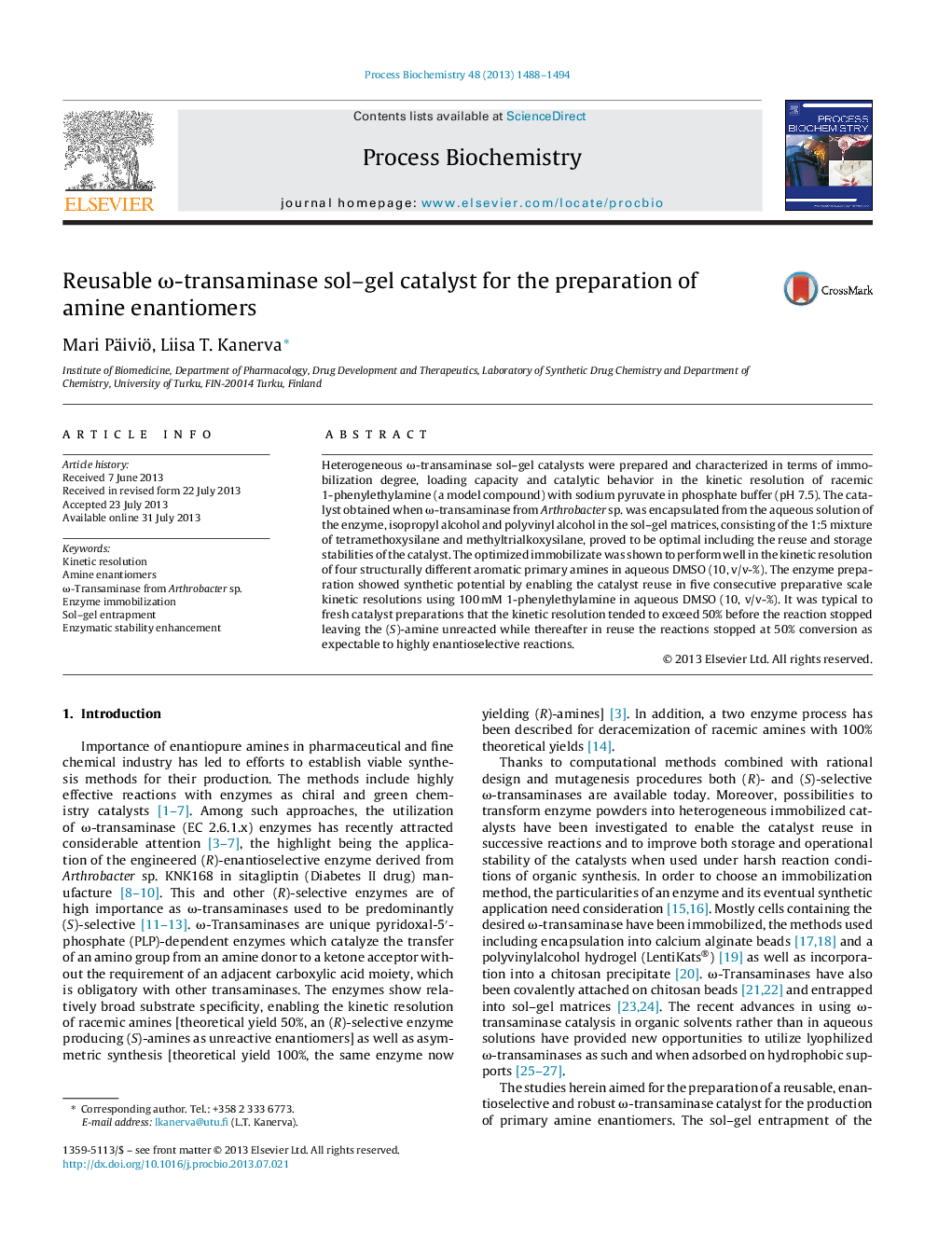| Article ID | Journal | Published Year | Pages | File Type |
|---|---|---|---|---|
| 34544 | Process Biochemistry | 2013 | 7 Pages |
•ω-Transaminase from Arthrobacter sp. was immobilized using sol–gel encapsulation.•Isopropyl alcohol was the best additive in encapsulation.•Washing of a maturated gel should be terminated by washing with isopropyl alcohol.•Long-term stability and reuse capacity of the catalyst preparation were good.•Optimized immobilizate works well in the kinetic resolution of primary amines.
Heterogeneous ω-transaminase sol–gel catalysts were prepared and characterized in terms of immobilization degree, loading capacity and catalytic behavior in the kinetic resolution of racemic 1-phenylethylamine (a model compound) with sodium pyruvate in phosphate buffer (pH 7.5). The catalyst obtained when ω-transaminase from Arthrobacter sp. was encapsulated from the aqueous solution of the enzyme, isopropyl alcohol and polyvinyl alcohol in the sol–gel matrices, consisting of the 1:5 mixture of tetramethoxysilane and methyltrialkoxysilane, proved to be optimal including the reuse and storage stabilities of the catalyst. The optimized immobilizate was shown to perform well in the kinetic resolution of four structurally different aromatic primary amines in aqueous DMSO (10, v/v-%). The enzyme preparation showed synthetic potential by enabling the catalyst reuse in five consecutive preparative scale kinetic resolutions using 100 mM 1-phenylethylamine in aqueous DMSO (10, v/v-%). It was typical to fresh catalyst preparations that the kinetic resolution tended to exceed 50% before the reaction stopped leaving the (S)-amine unreacted while thereafter in reuse the reactions stopped at 50% conversion as expectable to highly enantioselective reactions.
